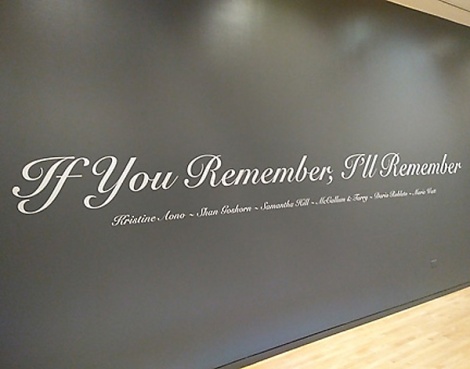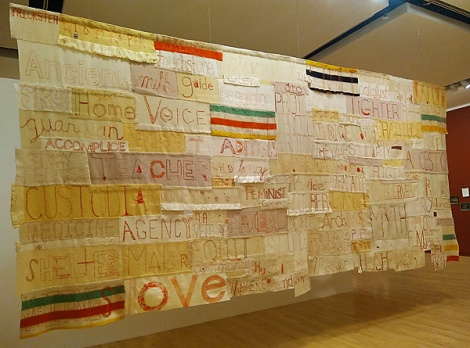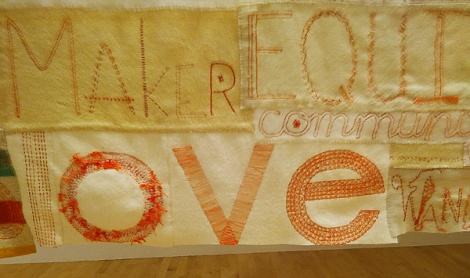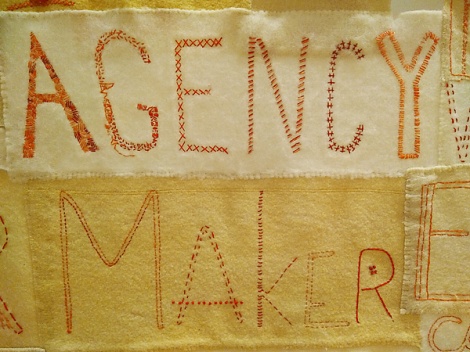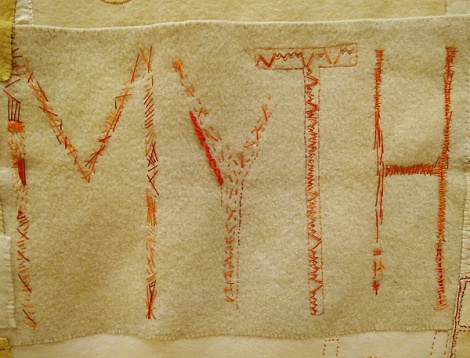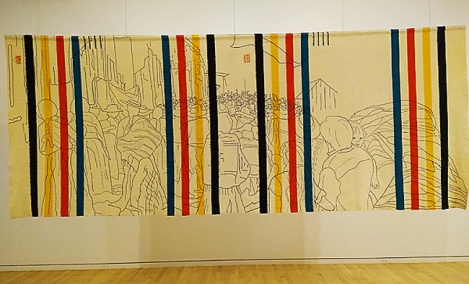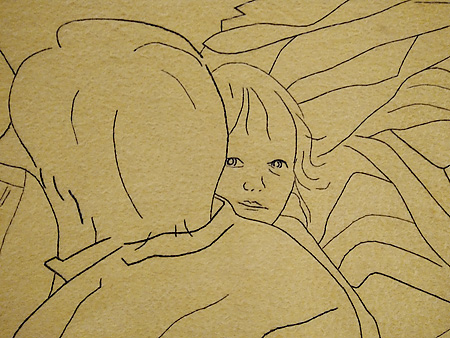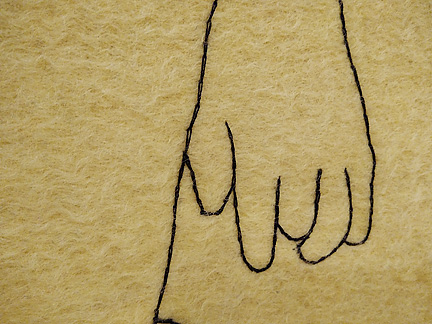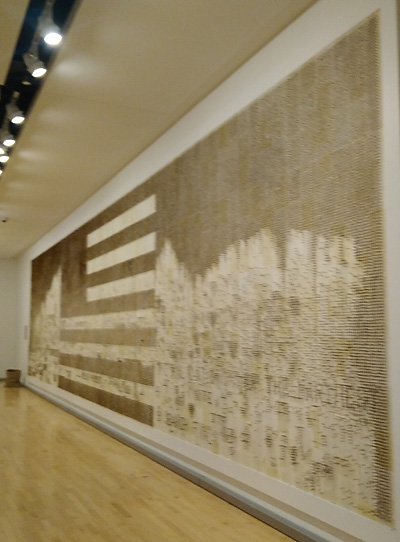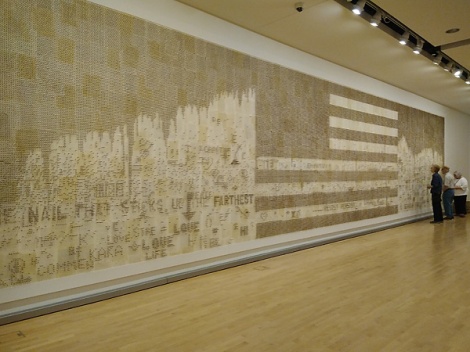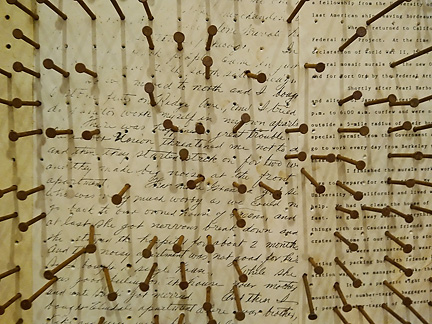“If You Remember, I’ll Remember” III
If You Remember, I’ll Remember” an innovative group exhibition about cultural/historical memory is currently at The Block Museum of Art At Northwestern University .
“If You Remember, I’ll Remember is an invitation to reflect on the past while contemplating the present through works of art exploring themes of love, mourning, war, relocation, internment, resistance, and civil rights in 19th and 20th century North America. This exhibition includes works by artists Kristine Aono (b. 1960), Shan Goshorn (b. 1957), Samantha Hill (b. 1974), McCallum & Tarry (active 1998-2013), Dario Robleto (b. 1972), and Marie Watt (b. 1967). By engaging with historic documents, photographs, sound recordings, oral histories and objects of material culture drawn from institutional and informal archives, these artists highlight individuals’ stories or make connections to the their own histories. Some make explicit links to events across time periods, while in others these associations are implicit.”
The work of transdisciplinary artist Samantha Hill:
‘Since 2009, Chicago artist Samantha Hill has been developing the Kinship Project Archive, a repository comprised of oral histories and more than 3,000 objects, including vintage photographs and scrapbooks mostly from African-American families. The items are obtained primarily through Hill’s in-depth engagement with various U.S. communities, particularly in Anchorage, Alaska, Charlotte, North Carolina, and Chicago. Her installation “Herbarium”(2015 to 2017) was first presented at the Hyde Park Art Center in 2015 and has been revised and expanded for this exhibition. The work was inspired by a gift of artifacts from a Hyde Park family dating from 1839 to 1940 and includes newspaper clippings, letters and other documents related to family history and political events in the South. Hill’s work also features items related to the early of history of Birmingham’s 16th Street Baptist Church, which became a nationally charged site in 1963 when members of the Ku Klux Klan bombed the building, killing four little girls.” —https://news.northwestern.edu/stories/2017/01/if-you-remember-ill-remember-poses-timely-questions/







